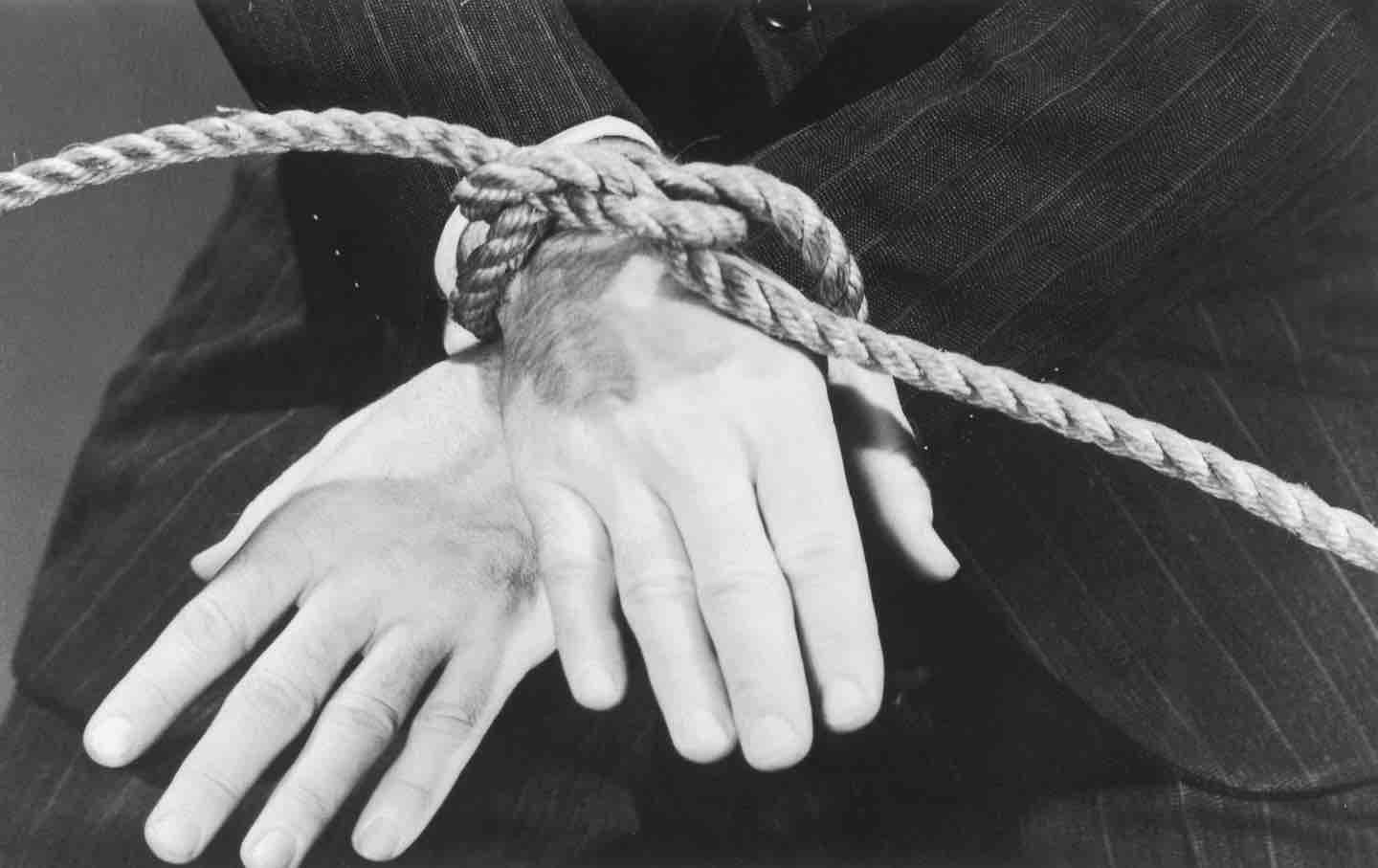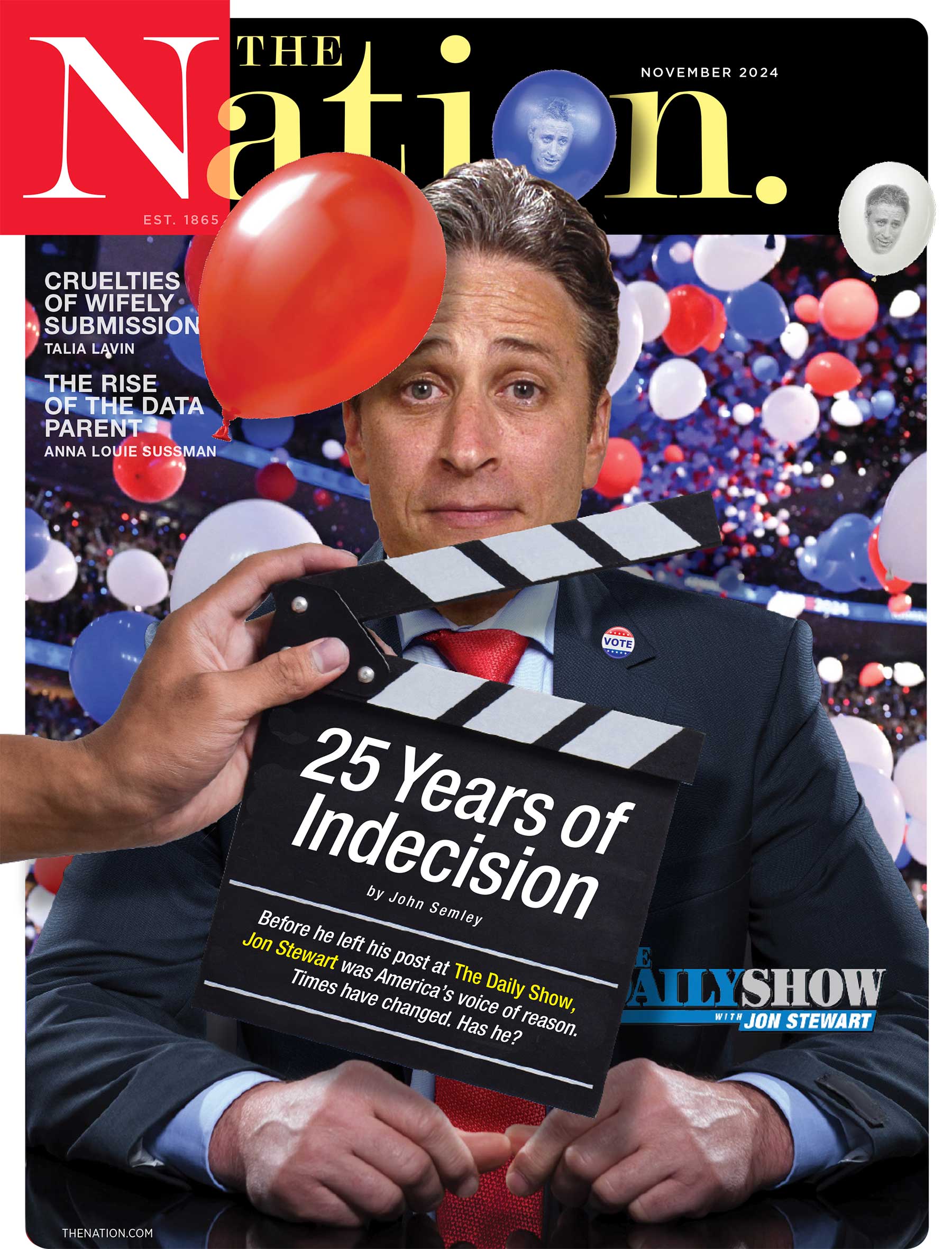Work-Life Imbalance
Danzy Senna’s acerbic satires of art and money.
Danzy Senna’s Acerbic Satires of Art and Money
Having gnawed away at literary and political conventions from within their hallowed forms, Senna has now set her eyes on Hollywood.

For most of her career, the novelist Danzy Senna has maintained a cagey relationship to the politics of representation. Her debut novel, Caucasia—a sweeping bildungsroman about a mixed-race girl teetering on the color line—thrust her into the spotlight and inaugurated her as an official biracial spokesperson. “I remember thinking, If you are being heralded for writing triumphant and positive representations of mixed-race characters, how do you ever write another book?” Senna said in a 2017 interview with New York magazine. She responded with Symptomatic, an acerbic workplace thriller about an older biracial woman’s obsession with a younger mixed-race colleague. Senna’s sophomore offering signaled that her work would be unmoored from the expectations of “positive representation” or the tropes of the tragic mulatto. When these themes did appear in her work, Senna wrapped them in comedy and her signature sardonic wit. Her books, rejecting rubric, would be read on their own terms.
Books in review
Colored Television
Buy this bookWith Where Did You Sleep Last Night?, Senna applied this anarchic framework to her own family history. The memoir was a roving investigation of ancestry and a sobering appraisal of her parents’ infamous marriage. Senna descends from literary nobility: Her father is the editor Carl Senna and her mother the poet and novelist Fanny Howe. Their marriage was celebrated in the 1960s as a symbol of racial progress, but the reality of their relationship was far more devastating: Senna’s father was an alcoholic who abused his wife and neglected his progeny. “When I was a child, I worried that my mother would die by violent means,” Senna writes early in the book. “I worried she would die by my father’s hand.” Her parents’ divorce came as a relief for the young Senna, but it didn’t make her family life any more stable, and the tensions between Senna and her father persisted for years. When Where Did You Sleep Last Night? was published, her father sued her and her publisher for defamation.
Despite the lawsuit, Senna continued to probe the tensions found in mixed-race marriages, families, and friendships in subsequent books, including the short story collection You Are Free. But her freewheeling inquiries and humor really came to the fore in New People, an invigorating novel about the impending union of a mixed-race couple in 1990s Brooklyn, which examined the racial liberation promised by the new millennium. Her protagonists’ relationship became the perfect vehicle for her most cutting satire about the Black bourgeoisie and its doomed quest for perceived racial authenticity. With New People, Senna finally seemed to liberate herself from the expectations of representation. She may have played a part-time racial diagnostician and occasional literary trickster, but she was above all else a skilled satirist and an acute observer of middle-class social mores.
Having gnawed away at literary and political conventions from within their hallowed forms, Senna continues to examine them in her new novel, Colored Television. Representation remains an entry point (not a destination) through which she takes on a whole world of social expectations and habits of mind, many of which she has toyed with in previous books: What is the relationship between a writer and her work? How can she balance that work with the pressures of domestic responsibility and economic constraints? Where do her loyalties lie when it comes to art and family? In Colored Television, the experience of being mixed-race in America is crucial and ever-present, but Senna is also interested in the competing loyalties and difficult challenges faced by artists in any discipline.
Colored Television follows Jane, a scattered novelist and academic whose desire for stability edges her into the slippery world of Hollywood. After failing to sell her second book—a “mulatto War and Peace“—Jane reconsiders her animus toward writers who abandon the isolating struggle of literary fiction for the intellectually diluted world of television. She begins to look for work in that industry and soon meets Hampton Ford, an in-demand Black producer paranoid about the stability of his burgeoning popularity and obsessed with representation. Together, they decide to write a comedy about biracial Americans. “It could be, like, Pinky meets—I don’t know—Modern Family. Imitation of Life meets, like, Everybody Loves Raymond,” Hampton says to Jane during their first encounter. “I mean, this is America. Everybody deserves a show about people like them, right?”
That Senna chooses Hollywood as the setting of her latest social satire makes sense: Where else has the struggle for better, different, less corny portrayals of ethnic minorities, queer folks, and other historically disenfranchised groups been more fraught than in Tinseltown? The campaign for more representation on-screen is decades old, but its recent crescendo began with lawyer April Reign’s #OscarsSoWhite campaign in 2016, after the Academy of Motion Picture Arts and Sciences awarded all 20 of its acting nominations to white performers two years in a row. The hashtag spurred a minor reckoning, forcing the industry to confront its legacy of exclusion. An even more explosive crisis followed four years later, during a period that now feels like a fever dream. Hollywood came under greater scrutiny and this time—motivated by a suspicious combination of guilt and fear—scrambled to course-correct. Kenya Barris, whom Hampton Ford resembles in terms of his chaotic energy, said it best in a 2021 interview with The Hollywood Reporter (where I’m employed): “It’s a special time in this industry if you’re Black and you have something to say.”
So how does Jane infiltrate the world of Hollywood? At the start of Colored Television, she has just moved into her friend Brett’s house for the year while working on her second novel. The two mixed-race writers share a bond forged in the psychodrama of MFA workshops and have, in the years since graduating, chosen different paths. While Jane makes ends meet teaching creative writing to hopeful undergraduates, Brett shifted to screenwriting and saw his career quickly take off. “It was as if the same blankness that made his fiction writing fall flat became a superpower in television,” Jane muses early in the novel. Brett’s entrance into a new tax bracket afforded him a beautiful home outfitted with designer furniture and stocked with expensive wine that Jane could never afford with her meager salary. Brett, who had always been Jane’s mirror image as they navigated the murky terrain of racial ambiguity in graduate school, now reminds her of the life she might have had. “Was Brett happy with his success?” Senna writes, describing her protagonist’s musings. “Did the money make up for what seemed to Jane rather mind-numbing work?”
Jane might not be sure about the health of Brett’s artistic soul, but after moving into his spacious home with her husband, Lenny, and their two children, she discovers that the TV checks offer fulfillment of a different kind. Jane was raised by East Coast bohemians who eschewed their middle-class roots on political principle. “Her poverty was the loneliest kind, the least dignified kind, because her parents had chosen it,” Senna writes. Although Jane and Lenny are both working artists—he’s a painter—Jane wants a different life for their children, Finn and Ruby. She fantasizes about living in Pasadena, which she nicknames “Multicultural Mayberry,” a place where her kids “might know what it felt like to be bored and listless in a house whose corners they knew as well as their own faces.” She doesn’t want them to be like her, the mixed-race child of “peripatetic artistic hippies.” Jane hungers for a California American Dream, defined by respectable wealth and a tasteful home among the non-struggling artistic class.
All of this primes Jane for her leap into Hampton’s world. So, too, does the news from her agent that her editor has rejected her second novel. She had pinned her hopes—the house in Multicultural Mayberry, friends for Ruby, stability for Finn—on selling that book. Panic quickly sets in as Jane envisions herself turning out like a colleague who accomplished nothing during a sabbatical and came back with an increased course load and no path toward tenure. No longer does she feel “superior to Brett and all his industry friends,” who had given up the “work of high art, of elevating the culture,” to “spout drivel in the land where original ideas go to die.” So she surreptitiously contacts Brett’s television agent, Marianne Berkowitz, and before she knows it, she’s pitching a comedy to industry executives around the city.
As Jane becomes further entangled in the business of selling authenticity, Senna deploys increasingly lacerating observations of Hollywood. The writing is crisp, the tone cutting, and as is typical in a Senna novel, few people are spared. Among those roasted: writers who take their work too seriously, writers who don’t take their work seriously enough, MFA workshop culture, television producers and their assistants, studio heads, Los Angeles, the New York literary scene, the Kardashians, and the particular kind of striving that plagues the artistic bourgeoisie. Senna is at her sharpest when sketching the screenwriter’s life. Here, she also considers the state of the novel and why authors might abandon their manuscripts for writing rooms—that so-called business of selling out.
Through Hampton’s interactions with Jane, Senna excitedly returns to her old stomping ground: lampooning the efforts to quantify racial authenticity. Along the way, she also satirizes the tension between artistic pursuits and cultural change-making. Hampton’s paranoia about his own self-extinction (“Jujubean is gonna probably marry a white guy, and her kids will marry white people and I’ll end up with some Abercrombie & Fitch motherfuckers for grandkids,” he says of his kindergarten-age daughter), coupled with his anxiety about creating important work (“Let’s make a show with a premium vibe—edgy—but not so out there that we lose the masses”), renders him a wellspring for Senna’s insights on the contradictions and desperation of a particular kind of industry figure.
In a more subtle register, Colored Television also explores the exploitative elements of Hollywood’s labor models for writers. Marianne sets up meetings for Jane with different producers, which are framed to her as speculative dates. While Finn and Ruby are at school, Jane drives to offices around Los Angeles (a city from which she already feels alienated), where she makes awkward small talk, volleys a few ideas, and leaves with an expensive bottle of water. Actual contracts are an entirely different thing: As Marianne explains, if Jane hits it off with a producer, they might agree to enter an “if-come” deal, in which Jane will get paid for her work only if the show is picked up for production. Desperate for a new way to earn an income, Jane enters a kind of fugue state in which she accepts these dubious terms and starts brainstorming episodes for her comedy.
Much to her surprise, Jane finds this work rewarding. She feels like a different person: “It had only been a week, but she had noticed that she was finally, for the first time in years, maybe ever, fully present when her children came home from school. She’d never understood so profoundly how much being a novelist was at odds with domestic life, with sanity.” As a novelist, Jane’s life was overtaken by a chorus of characters and tangled plot lines. She sequestered herself, was irritable with her children and upset with her husband. Screenwriting, or at least its discrete and structured process of episodic projects, frees her from the demands of an endless all-consuming narrative.
As Jane takes to her new Hollywood work, her domestic life improves. Senna’s exploration of this realm is uncharacteristically sincere. Her tones shift—occasionally sweet, sometimes serious, always earnest—and it’s a jarring contrast to her biting depiction of Jane’s world outside the home. In these sections, where Jane and Lenny plan dates to revive their marriage or wonder about the impact of their semi-itinerant lifestyle on the children, Senna wrestles with the real anxieties of partnership and raising Black children in a racist world.
These elements counter the conventional notions of representation. While Jane tries to package mixed-race identity for television, the complexity of her own existence shows the futility of such a task. A big twist at the end of the novel partially clarifies the relationship between the comedic and the sentimental, but until then these alternating threads compete with one another. At times, Jane’s domesticity makes Colored Television read like the kind of sitcom Jane and Lenny might privately mock.
Yet even as she indulges in the details of Jane’s domestic life, Senna maintains a steady grip on the more electric parts of the novel. As we follow Jane’s misadventures in the world of Hampton, Hollywood, and her white whale of a comedy, we are reminded that the grass is not always greener on the other side. The tensions between artists and their work come back to the fore—as do those of the competing loyalties and conflicting relationships that are found in all of Senna’s novels. Jane begins to accept that being an artist always requires a sort of compromise, whether that involves one’s integrity, relationships, or visions of the future. A successful television writer might make more money, but it might leave her indebted to clichés and caricatures. Hoping to render her mixed-race characters as compelling and complicated as possible, Jane requires time, but Hampton and others in the industry simply want more—more text, more pages, more ideas, more content. “You novelists take your time, really develop things,” Hampton says, almost mocking Jane’s process. “But here, it’s just like, hand it over. Now.”
Popular
“swipe left below to view more authors”Swipe →As in Senna’s other fiction, Colored Television ends by reminding us that all art has its trade-offs. In the end, a novelist can offer only an oblique, partial, and refracting versions of reality in her work; she can bring to the fore stories that have often been neglected or caricatured by others, but she will also likely be risking her own material stability. By contrast, a television writer must deal in unwieldy, obvious symbols that can become, very quickly, an extractive prison. To observe and represent reality is every artist’s task, and yet each medium imposes its own costs. Just as there is no single method of selling out, there is no single art monster—only infinite possible versions of the frustrated creative self.
We cannot back down
We now confront a second Trump presidency.
There’s not a moment to lose. We must harness our fears, our grief, and yes, our anger, to resist the dangerous policies Donald Trump will unleash on our country. We rededicate ourselves to our role as journalists and writers of principle and conscience.
Today, we also steel ourselves for the fight ahead. It will demand a fearless spirit, an informed mind, wise analysis, and humane resistance. We face the enactment of Project 2025, a far-right supreme court, political authoritarianism, increasing inequality and record homelessness, a looming climate crisis, and conflicts abroad. The Nation will expose and propose, nurture investigative reporting, and stand together as a community to keep hope and possibility alive. The Nation’s work will continue—as it has in good and not-so-good times—to develop alternative ideas and visions, to deepen our mission of truth-telling and deep reporting, and to further solidarity in a nation divided.
Armed with a remarkable 160 years of bold, independent journalism, our mandate today remains the same as when abolitionists first founded The Nation—to uphold the principles of democracy and freedom, serve as a beacon through the darkest days of resistance, and to envision and struggle for a brighter future.
The day is dark, the forces arrayed are tenacious, but as the late Nation editorial board member Toni Morrison wrote “No! This is precisely the time when artists go to work. There is no time for despair, no place for self-pity, no need for silence, no room for fear. We speak, we write, we do language. That is how civilizations heal.”
I urge you to stand with The Nation and donate today.
Onwards,
Katrina vanden Heuvel
Editorial Director and Publisher, The Nation
More from The Nation

The Perils of a Post-Racial Utopia The Perils of a Post-Racial Utopia
In Nicola Yoon’s One of Our Kind, a dystopian novel of a Black upper-class suburb’s secrets, she examines the dangers of choosing exceptionalism over equality.

Why Americans Are Obsessed With Poor Posture Why Americans Are Obsessed With Poor Posture
A recent history of the 20th-century movement to fix slouching questions the moral and political dimensions of addressing bad backs over wider public health concerns.

Thomas Müntzer’s Misunderstood Revolution Thomas Müntzer’s Misunderstood Revolution
A recent biography of the German preacher and leader of the Peasants’s War examines what remains radical about the short-lived rebellion he led.

Is It Possible to Suspend Disbelief at Ayad Akhtar’s AI Play? Is It Possible to Suspend Disbelief at Ayad Akhtar’s AI Play?
The Robert Downey Jr.–starring McNeal, which was possibly cowritten with the help of AI, is a showcase for the new technology’s mediocrity.

Possibility, Force, and BDSM: A Conversation With Chris Kraus and Anna Poletti Possibility, Force, and BDSM: A Conversation With Chris Kraus and Anna Poletti
The two writers discuss the challenges of writing about sex, loneliness, and the new ways novels can tackle BDSM.

Lore Segal’s Stubborn Optimism Lore Segal’s Stubborn Optimism
In her life and work, she moved through the world with a disarming blend of youthful curiosity and daring intelligence.


